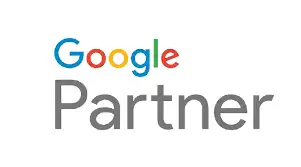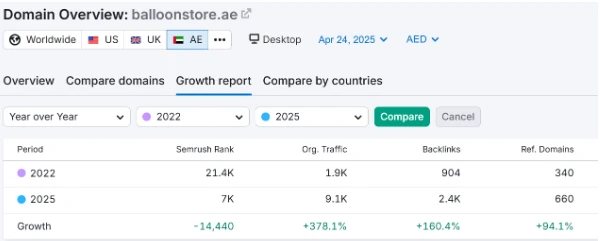Direct Listing Overview, pros & cons, and difference from IPOs
- digitalmanqoosh
- November 25, 2022
- Uncategorized
- 0 Comments
An investment banker will likely work with the company as an advisor to the company and the relevant exchange to set the “reference price” for the direct listing. This process, known as “building the [order] book,” is what sets the ultimate issuance price for the shares being sold in the IPO. As a technical matter, in most IPOs, a syndicate of investment bankers buys the shares from the issuer at a discount, and then resells the shares to the public. Perhaps one of the biggest differences between a direct listing and an IPO is that with a direct listing, you are not creating any new shares.
By contrast, an IPO offers a more direct way to raise funds for your company and boost your publicity, even if the initial cost is higher. Direct listings allow a company to raise money to go public without the hassle and cost of a traditional IPO. Going public without an underwriter can put a company at higher share price risk. This is because banks can help build investor interest for an IPO. A company can IPO through a traditional process, a direct listing or a SPAC.
The process of going public also involves working with an investment bank to underwrite the public offering. The underwriters work with the company’s management and shareholders to determine an appropriate IPO share price that will be attractive to investors while representing a fair value, given the company’s assets and future prospects. Underwriters also agree to support that price with their own capital by purchasing shares in the IPO themselves if need be. The underwriters will also work with one or more broker-dealers to assist in promoting and distributing the shares. A private company raises capital by selling newly-issued shares to investment banks (underwriters), which the banks then sell primarily to institutional investors. In a direct listing, also known as a direct placement, a company lists its shares on an exchange without the use of an investment bank or other intermediary.
In a typical IPO, investment bankers facilitate the gathering of orders for the IPO from investors, including taking the management team on a “road show” to meet with investors. Out of the three direct listings thus far, one-third have been sued, which is to say one company—Slack—was hit with Section 11 litigation. As always, make sure to research before you invest in a company that’s just recently gone public.
What is Direct Listing?
You’ll hear directly from bestselling author and investment expert Alexander Green. He’s also worked as an investment advisor, research analyst and portfolio manager on Wall Street for 16 types of financial instrument years. As part of a traditional IPO, the intermediary acts as a middleman between a company and the investing public. Generally, the intermediary is involved in every aspect of the IPO.
If demand outstrips supply, the price could rise faster than is warranted, while if the supply of stock exceeds demand, the price could fall. Over time these imbalances can work themselves out, but in the short term they could whipsaw a stock. A direct listing also allows insiders to sell their stock TD Ameritrade immediately on the exchange without the lock-up of shares that is normal in the IPO process. In many cases the only stock available in a direct listing comes from insiders (and not from a company selling shares), so preventing insider sales would stymie the success of the direct listing process.
- Generally, the intermediary is involved in every aspect of the IPO.
- But this compensation does not influence the information we publish, or the reviews that you see on this site.
- An IPO is the traditional way for a company to raise equity capital for its operations from the broader investing public.
- Prior to the IPO, the company and its underwriter partake in what’s known as a “roadshow,” in which the top executives present to institutional investors in order to drum up interest in purchasing the soon-to-be public stock.
Select investment banks are financial advisors to the company in this process. In contrast, for an IPO, the company hires investment banks to underwrite the sale of shares that raise capital for either the company and/or private shareholders. A direct listing, also referred to as a direct listing process (DLP) or direct public offering (DPO), is the listing of the stock of a private company on a national stock exchange without the use of an intermediary. The role of an intermediary (i.e., an underwriter) in a traditional IPO is to act as the middleman between a private company and the investing public. Generally, the underwriter does the due diligence to determine the IPO stock price, mint new shares of a company, and facilitate stock sales before the IPO date.
A Direct Listing
One of the key components of an IPO is the fact that shares are underwritten by an intermediary, and new shares are created for purchase. An underwriter typically takes a percentage of the price of each share, so underwriters can make quite a bit from a single IPO. We could see companies raising capital privately ahead of a direct listing, like Spotify, Slack and Asana, which each had a fundraising round less than a year before listing, allowing them to be impartial to an IPO or direct listing. We could see public investors becoming more active in buying shares of a private company ahead of its direct listing to establish positions earlier. The first step in an IPO is the company filing an S-1 with the U.S.
But they won’t be interested in investing unless you or other company executives help build up interest in your stocks before you go public. The existing investors, promoters, and even employees holding shares of the company can directly sell their shares to the public. The process is considered to be more democratic and Crypto trader decentralized. It helps determine the initial offer price of a stock and buys shares from the issuing company. Banking services and bank accounts are offered by Jiko Bank, a division of Mid-Central National Bank. JSI and Jiko Bank are not affiliated with Public Holdings, Inc. (“Public”) or any of its subsidiaries.
Traditional IPO Pros and Cons
While the cost of an underwriter can be substantial, they are providing financial expertise and the ability to raise funds that the issuer may not have. It’s usually less expensive for a company to go public via a direct listing than conducting an IPO. Securities and Exchange Commission announced that it will allow companies to raise capital through direct listings, paving the way for circumvention of the traditional initial public offering (IPO) process. In a direct listing, a company floats its shares on an exchange without hiring investment banks to underwrite the transaction as an initial public offering.
Stocks vs. ETFs: Which should you invest in?
You can trade Treasury securities and Regulation A securities on the Public platform. These brokerage services are offered by broker-dealers other than Public Investing, who may pay us a referral fee or other compensation. Please see Open to the Public Investing’s Fee Schedule to learn more. Because the price of a direct listing is entirely based on supply and demand, it can be difficult to predict the range at which the stock is traded.
In this process, you create new shares of your company along with an underwriter intermediary. Once the shares are publicly available, they can be purchased by investors. A company that goes public through a direct listing vs. IPO often has different goals. Companies choosing a direct listing approach may not necessarily be seeking capital.
IPOs are the more common choice, especially for larger companies that have the means to work with an underwriter. Special purpose acquisition companies (SPACs) became all the rage in 2020 after regulators changed some of the rules governing this private-to-public structure. Direct listings, until recently another mostly unused process for going public, have caught investor’s attention after a new listing rule from the New York Stock Exchange. This listing rule allows companies to sell new shares, not just existing shares, via direct listing, something that previously was not allowed.
The first direct listing was the ice cream company Ben & Jerry’s in 1984, then raising only $750,000. In 2018, however, Spotify became the first corporation to use a direct listing on the New York Stock Exchange (NYSE), followed by Slack in 2019. This year, companies such as Squarespace and Roblox plan on filing publicly via direct listing.
Some IPO prices increase after they become available for the public market. As a result, the issuer that registered the shares doesn’t get any proceeds from the direct listing. Before going public, one of the biggest decisions you need to make is whether to go with an IPO or direct listing. Unfortunately, many business owners don’t know the key differences and benefits of these options. As a social investing app, Public provides financials for some of the well known publicly traded companies at your fingertips, so you can review stock-specific data and insights. The Council of Institutional Investors argues that investors may have fewer legal protections with direct listings as opposed to IPOs.










